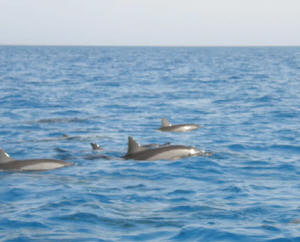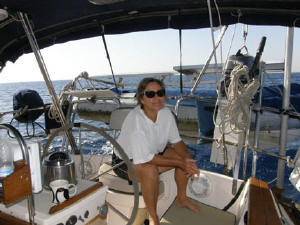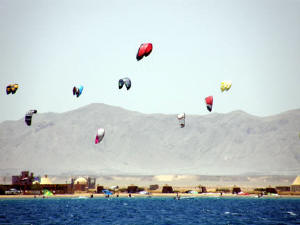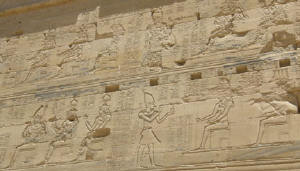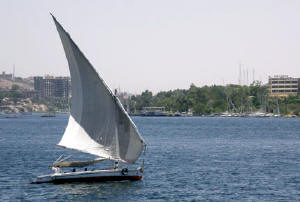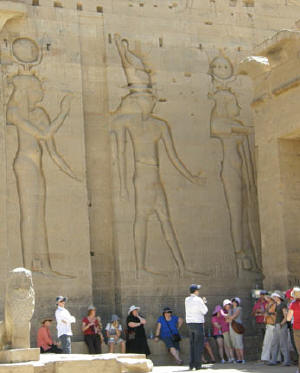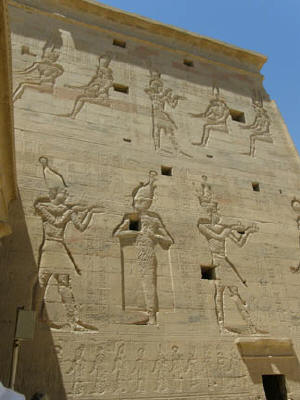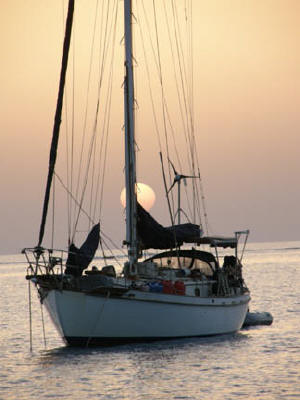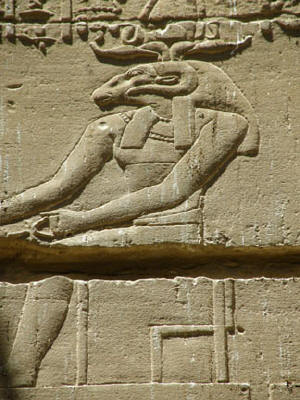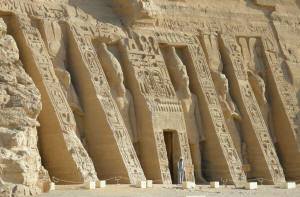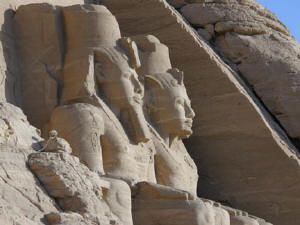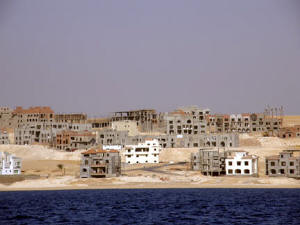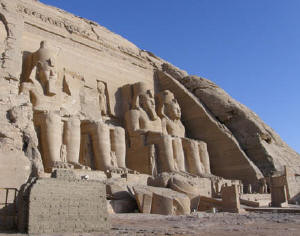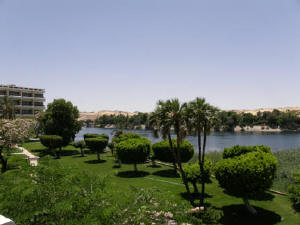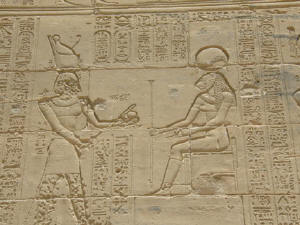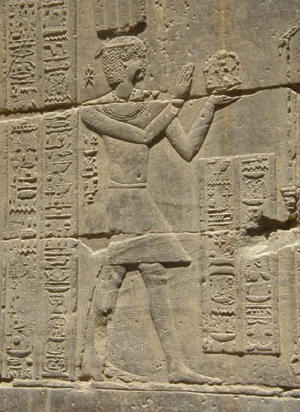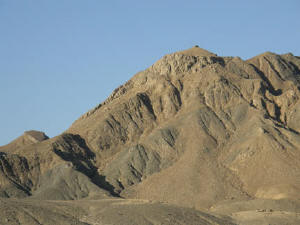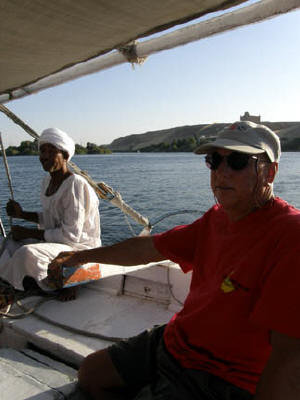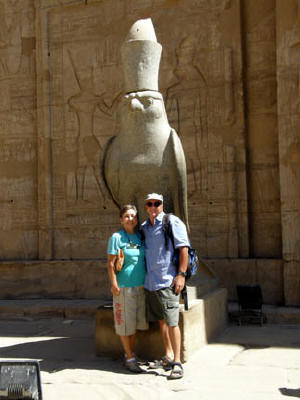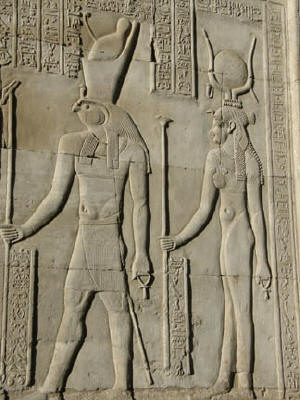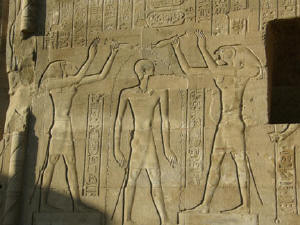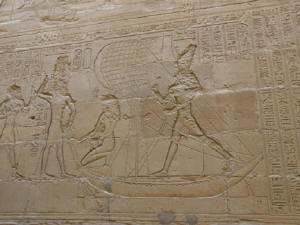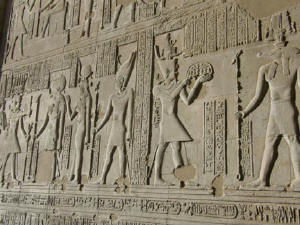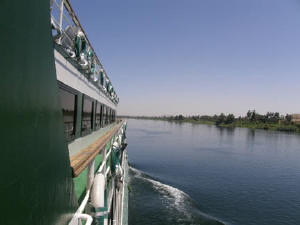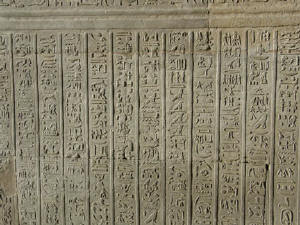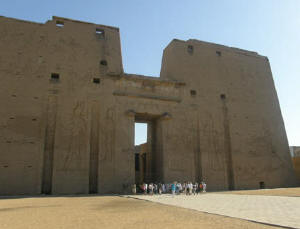Red Sea
Eritrea Sudan
Egypt
Egyptian Antiquites
Petra Jordan

It seems a unanimous cruiser sentiment that Egyptians are the most difficult people one likely encounters on a circumnavigation. We had visited the country previously and pretty much agreed with this consensus. After seeing both the ancient Pyramids and modern Cairo Rob had concluded the height of Egyptian civilization was 5,000 years ago and it has been downhill ever since.
However our first stop in Egypt made us think differently. We pulled in to the rarely visited Marsa Halib not far from the Sudanese border and were welcomed by Captain Ahmad Wadil aka Pantera, the young captain of the Naval boat there. He and his crew could not have been more hospitable or helpful offering us fresh water and food from their own stocks. He even sent his crew to the nearby village to get us fresh produce plus provided some diesel fuel for our friends on Sarenity who were low.
We were to spend 5 days pinned down by strong winds here but eventually we got a break and headed for Dolphin Reef which was certainly one of the highlights of this trip. Here we spent almost a week, each day snorkeling with wild dolphins who would let us get within arm's length of them. At one point Rob watched two of the dolphins boisterously mating while the rest of the pod swam all around them wildly as if cheering them on. When we were not snorkeling with the dolphins we scuba dove outside the reef and saw large rays, turtles and a bump head wrasse as big as Dee.
From Dolphin reef it was a not far to Port Ghalib which was our first taste of civilization in quite awhile. We were finally able to restock supplies at a regular grocery store and this was the first place to sell alcohol that we had seen since leaving Thailand 5 months previously. Diesel here was nearly $4 per gallon but 50 miles away in El Quesir the diesel was only about .80 cents per gallon so that was our next stop.
The day we tried to leave though the wind was very strong and pushing us right
onto the dock. Given the tight quarters for maneuvering and no dinghy
available to assist us, we opted to stay another day which turned out to be a
fortunate coincidence. That night the hotel at the marina was holding a
traditional Arab themed night with belly dancer and whirling dervish. We
were to see similar shows several times in the next months but none as good as
this one.
It was odd to see the scantily clad belly dancer perform while the few Arab
women in the hotel were dressed in burkas and head coverings. The
highlight of the evening though was the whirling dervish. These are men
wearing a traditional full skirt in interesting colors and patterns.
As the music picks up tempo they start spinning in a tight circle. As they
spin their skirts that have heavy hems whirl out until the hem is lifted to the
height of their waist making about a 6 foot diameter circle of color with them
in the middle. As they go faster and faster it is revealed that they have
on 4 or 5 layers of skirts with different colors and patterns on each side.
Depending on how fast they spin they can reveal the different layers and
sometimes they slide the waist of the skirt up to their necks so all you see are
whirling masses of changing colors almost like a human kaleidoscope.
At Marsa Mahadiq I did a scuba dive and saw the most amazing thing I have ever witnessed in 35 years as a diver. Sticking out of a cave at a depth of 32 feet was a moray eel whose head was at least two feet across and his body was much thicker than my waist. Morays normally have their mouths open to breathe and I could have put my entire head and probably my shoulders inside his mouth. This is at least 5 times the size of all the hundreds of moral eels I have ever seen before.
From there our next stop was at Abu Tig marina just north of Hurghada where we spent several weeks getting reacquainted with civilization. Our arrival here coincided with President Obama's speech in nearby Cairo. We had been in Moslem countries since his inauguration and had been constantly getting Bush thumbs down and Obama thumbs up signals from people but now we were even more well received. Despite what Americans may think of either man there is no doubt the entire Arab world hated Bush and loves Obama.
We were also able to leave our boat here and travel to the Nile River where we boarded a luxury cruise ship for several days of sightseeing. Dee enjoyed having someone else cook and serve gourmet meals and I was free from the constant worry of boat maintenance and reef navigation. We had previously visited the Pyramids so we skipped them on this trip, allowing us time to concentrate on other sights. The places we visited were each spectacular in their own right: Abu Simbel, the Nile, Aswan Dam, Valley of the Kings, The Temple at Karnak and Luxor.
Getting ready to move onwards began with a watch of the long term weather forecasts. From here north to the Suez was to be one of the more difficult segments of our trip. We had seen over 30 days of 30 knot winds so far and many days of 40 knots and were used to the very short steep boat stopping waves of the Red Sea, but the Sinai would test us further. While we had been exploring the Nile our friends on Silver Heels II had spent 14 days without being able to leave their anchorage and wanting fresh food retreated to Abu Tig before trying again.
Our first day out started fine but by 10 am we were bucking into 25 knots and the shortest boat stopping seas we had seen anywhere. Normally we can motor at about 5 knots into 25 knot winds and seas, but here the ocean is so shallow the waves have nowhere to go but up so they get short and steep reducing our progress to a very painful 1.5 knots, and even at that speed crashing into boat stopping waves about 6 times per minute is very hard on both us and Ventana. From then on it was like a Mexican two step moving a day and waiting a day, moving a day then waiting a day.
At one point we cruised through one of the many off-shore oil fields dodging oil
rigs left and right which our chart said was OK to do. No sooner had we
passed that area than an Egyptian Navy gun boat raced up to us wanting to know
what we were doing. They insisted we stop and tie up alongside them so
they could board us and see our boat and papers. They were about 3 times
our size and tying to their steel hull in those waves would have demolished
Ventana so I refused. They repeated their insistence. I refused.
After about 4 or 5 times of repeating this stand-off I told them they could
launch their rubber dinghy and come alongside. This meant lots of work for
them and getting soaking wet so suddenly they were less interested in boarding
us. I gave them our names and passport numbers over the radio and they let
us go with a promise never to violate their oil field waters again. I am
sure they wanted us alongside so they could extort us for something.
By now we had dealt with so many obnoxious Egyptians trying every scheme
imaginable to rip us off, we were pretty savvy. We had battled cab drivers
quoting one price then trying to charge another price, we had been asked for
"baksheesh" for every service and non service. The armed guards who
patrolled the marinas and inspected our passports even though they knew us,
often asked for 'baksheesh" as if we should offer them a tip for the pleasure of
being hassled by them. In one cab ride the driver changed the price after
we were inside then would not stop to let us out even though Rob opened the door
and nearly sideswiped another car at 30 mph. (That ride ended when Rob reached
over the seat and turned off the ignition and kept the keys).
However despite all that, we had been told the Suez canal pilots were the absolute most obnoxious Egyptians, often asking for present after present for the entire six hour trip, or washing their feet in your kitchen sink before praying towards Mecca. And if the present was not adequate the pilot boat would ram you when it came to pick up the pilot. We were almost to the Suez Canal so we were prepared. As we got close to the canal and the very top dead end of the Red Sea the winds finally died to a breeze and we motorsailed between dozens and dozens of huge freighters and oil tankers waiting their turn to transit the canal.
Working with the canal measurement authority was only a minor hassle and the price was rapidly reduced when we complained, then next morning at 6 am we were off. To our complete surprise the pilot was a total gentleman and as polite as could be. Other than the necessary boat terms his English was about as good as our Arabic so we conversed via sign language but had a pleasant day together. The canal is basically a ditch dug through the flat desert and is very boring so we were glad to let him steer the entire trip.
The halfway point of the canal is a modern town called Ismalia and we paused here for several days to take advantage of the free fresh water to try to get Ventana clean. It was now mid July and we had not see any rain since leaving Thailand in January. And for days and days we had been blasted by 35 knot sandstorms in the Red Sea. As I hauled the hose up the mast to rinse the mast and rigging the decks ran red with the mud. For the next several months we were to repeat this and time and again more and more red mud would get washed away. Inside was the same with every nook and cranny of the boat coated in fine red dust.
It was at Ismalia that we saw the last in our long list of totally bizarre Islamic customs. The yacht club where we were tied up was quite fancy and had a restaurant and outdoor deck with sea side tables and chairs. One day they were preparing for a big party and the deck was set up like any country club would be for a fancy wedding with tables of food, live music and an ice sculpture on the buffet table. Around 8 pm the wedding reception guests began to arrive in all their finery. Everyone was dressed to the max with the bride in a flowing white burkah. As they arrived the men all went out to the deck which was set up for the fancy party and the burkah clad women filed upstairs to a drab empty room. And that is how they celebrated, with the bride and other women in this second class closed off room with no entertainment while the men were sea side under the stars with live music and gourmet food.
At 3:30 am our second canal pilot began pounding on Ventana's hull telling us it was time to go. We had been scheduled to leave at 6 am but he was here and ready to go so off we went. He was a bit more bombastic than our first pilot and did insist on looking inside his tip envelope before he left to check its adequacy but was otherwise fine.
Shortly after noon we finished our Suez Canal transit and it was with immense relief that we dropped off the pilot and headed on our way. At 1:06 pm on July 12, Ventana sailed into the waters of the Mediterranean. It felt like a huge accomplishment for us. Since leaving Thailand 6 months previously we had sailed over 5,000 miles, experienced our third major storm at sea, crossed pirate alley, dealt with a serious leak and damaged propeller and bashed our way up the Red Sea against 40 knot winds and sand storms. The Indian Ocean, The Red Sea and Egypt were all thankfully behind us and ahead lay the calm blue waters of the Mediterranean.
Click on any photo to enlarge. Hitting the back button on your browser will return you here.
To read more about the monuments and antiquities in Egypt and see more photos click here




















